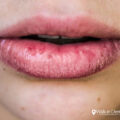Tues: 8:30am - 3:00pm
Wed: 12:00pm - 6:00pm
Thurs: 8:30am - 3:00pm
Fri: Closed
Sat: 8:30am - 12:30pm
Sun: Closed
Greenvale, NY 11548
Will Hair Dye Cause my Hair to Fall Out?


One of the most common questions dermatologists hear from patients is whether coloring their hair will cause it to fall out. Here’s what you need to know before your next trip to the salon or your next coloring session over your own bathroom sink.
Medical studies backed up by anecdotal evidence from women who color their hair show that those who experience hair loss may suffer depression, anxiety, and social phobia. Depression can trigger low self-esteem and lack of interest or pleasure in activities that were once enjoyable. The irony, of course, is that hair dyeing is supposed to make us feel good about ourselves, and our appearance. A new look is also exciting.
Beauty salons will likely tell you that dyes put a coating on your hair that makes it stronger. Semi-permanent color, some say, can help strengthen your hair while protecting it from pollution, summer heat and winter cold.
The reality is, the more often you color your hair, the greater the potential for hair shedding.
Hair dye does not stop or even slow down hair growth, but it can cause hair loss by damaging the color-treated hair. The chemicals in hair dye can cause some of the damage. Coloring your hair also requires heavy combing and rubbing, which can also contribute to hair loss because this manipulation can loosen the hair treated with dye.
The good news is, hair dye can’t reach the hair developing beneath your scalp so it can’t harm hair that has yet to grow. But you can experience an increase in hair shedding with frequent coloring sessions.
Telogen effluvium is the medical name for a form of hair loss. Symptoms include thinning hair or an increase in shedding. The condition occurs more often in women and is almost always triggered by a disturbance in the hair lifecycle.
The Lifecycle of Hair
Your hair typically goes through three distinct phases as your scalp grows, loses and replenishes hair:
- Anagen – The growth phase. In this phase, 85 to 90 percent of your hair is actively growing.
- Catagen – The transitional phase. This lasts 2 to 3 weeks and affects about 3 percent of your hair at any time. Hair growth slows in this stage.
- Telogen – The resting phase, which lasts for about 100 days on average. Hair follicles are completely at rest.
Telogen effluvium occurs during the telogen phase. Medical research shows between 5 to 10 percent of the hair on your head will be in the telogen phase at any given time. People who experience hair shedding lasting longer than 6 months are considered to have chronic telogen effluvium. Even in chronic conditions, patients typically won’t lose all their hair, though they may see noticeable thinning.
Common ingredients in hair dye products include ammonia and hydrogen peroxide, which is a bleaching agent. Both chemicals can loosen hair in the telogen phase. Hair coloration products can also weaken your hair shafts, leading to breakage.
Peroxide removes pigments from your natural hair color, which is why it is a common ingredient in formulations that produce a blonde color. But peroxide also strips protein from your hair, weakening the hair shafts. This can cause hair literally to break off at the scalp.
Here’s the bottom line: Semi-permanent coloration products are more gentle and do not contain alcohol or ammonia. These can be used more often than so-called permanent hair dyes. These contain harsh chemicals, including ammonia and peroxide. If you want to minimize hair damage, you’ll want to limit treatments to every six weeks. This won’t eliminate the potential for problems, but can reduce hair shedding to a more tolerable level.
Let Walk-in Dermatology Take Care of You
If you’re concerned about your hair or any skin condition, there’s no need to worry, wonder or wait. Walk-in Dermatology can help. Our team of board-certified dermatologists and experienced medical staff will address your concerns and provide the necessary treatment. You can also schedule an appointment with us online. Best of all, there’s no waiting. If you can’t make it to one of our offices, we can set up a Video Visit and even prescribe medications remotely. Contact us today.








